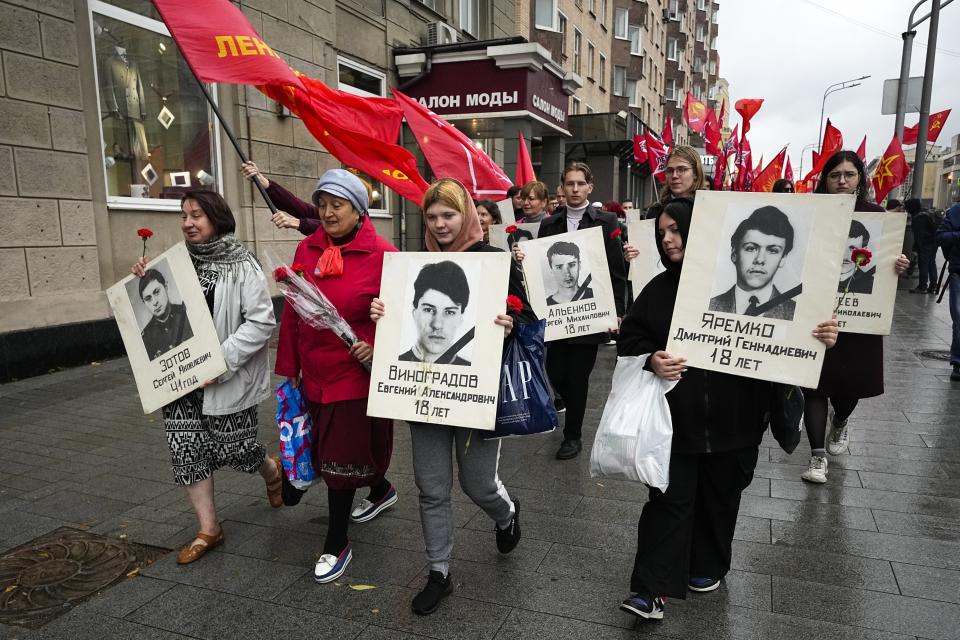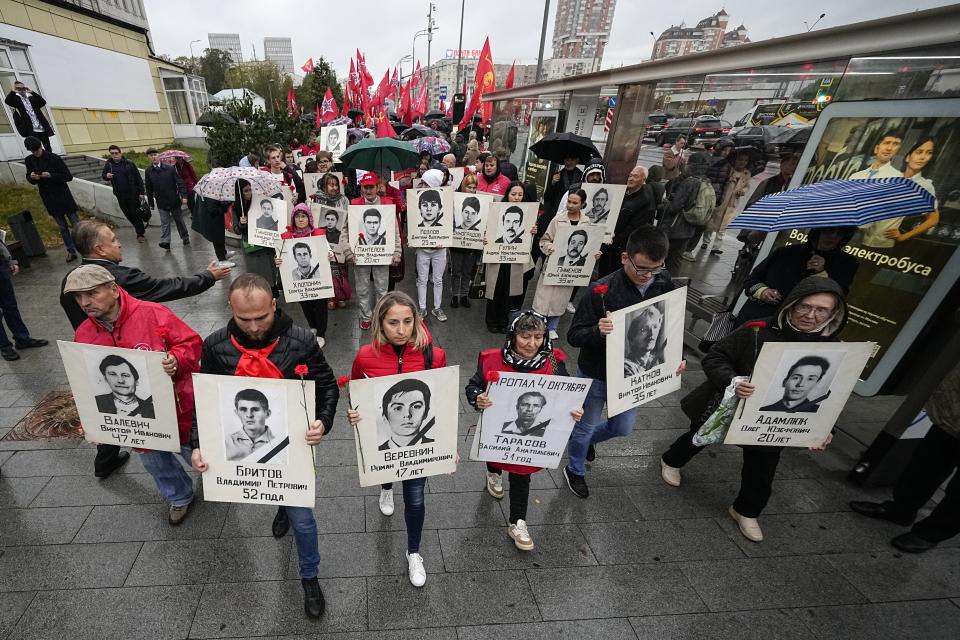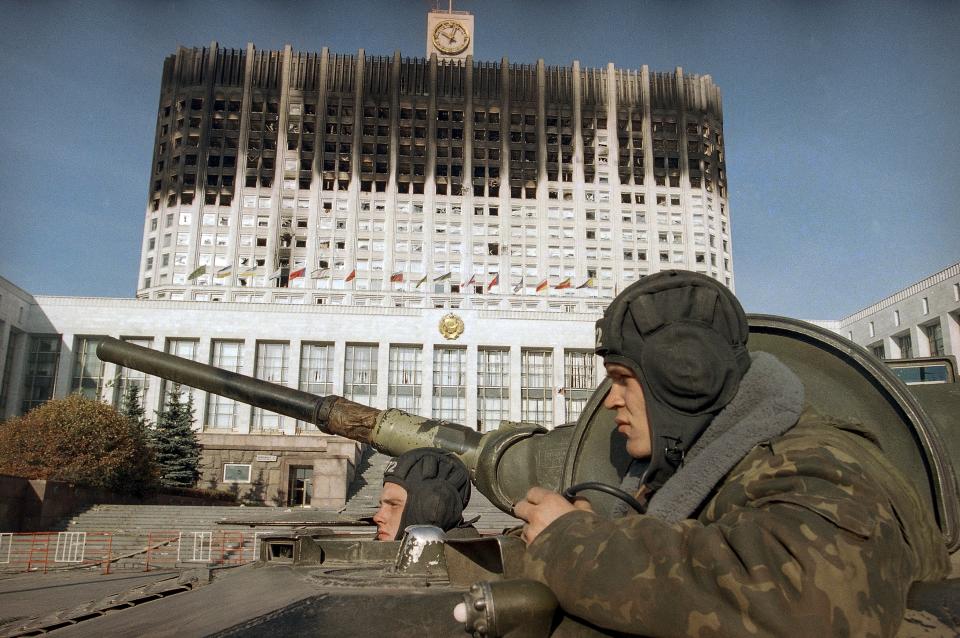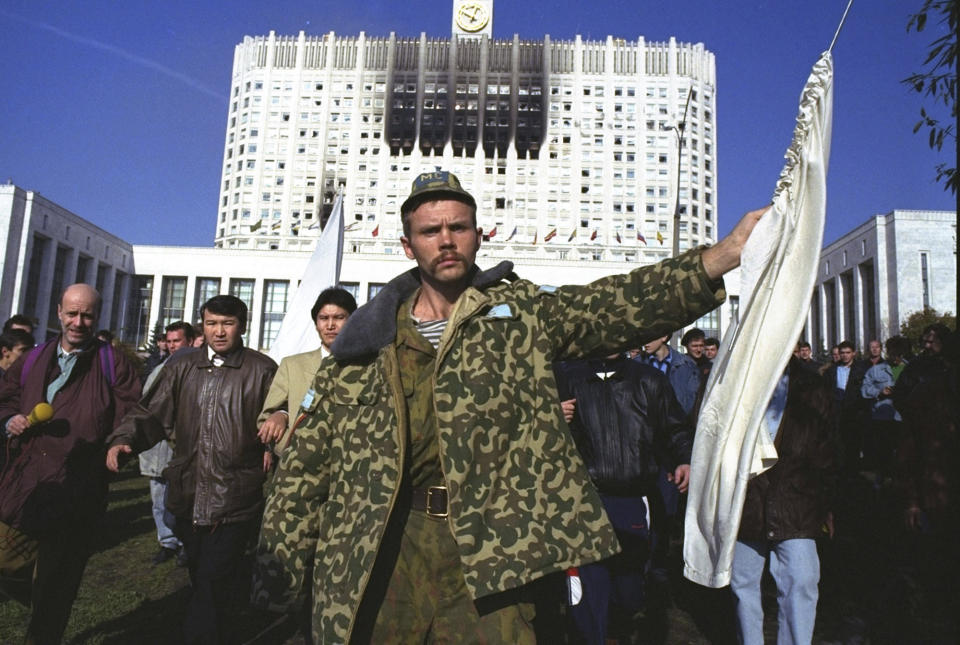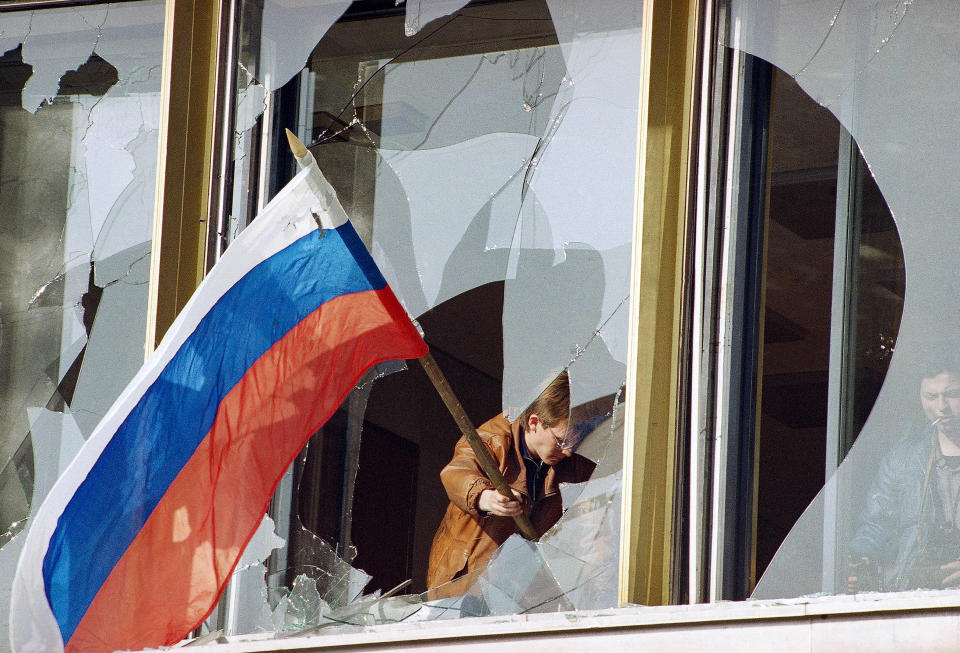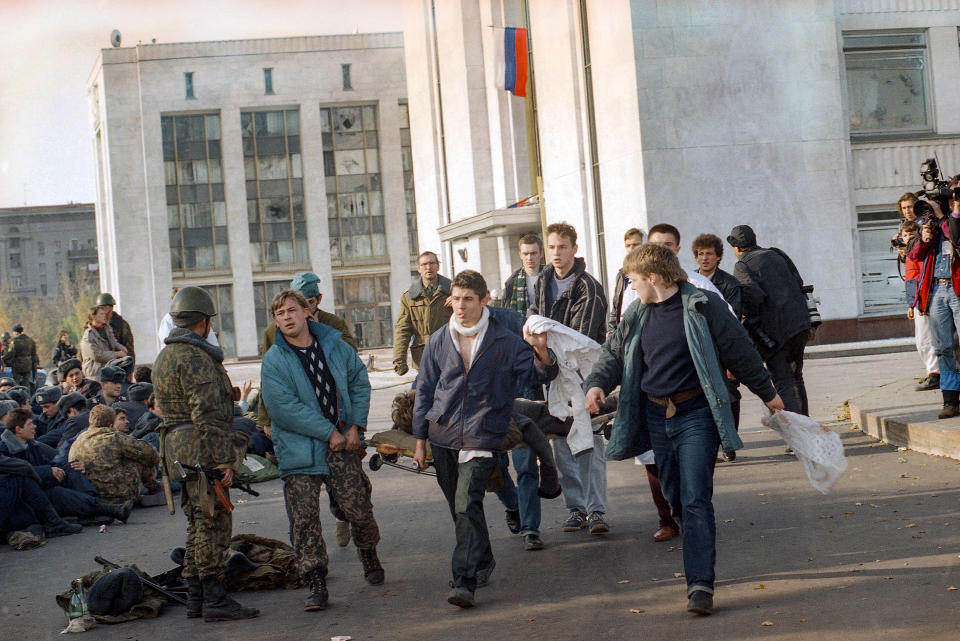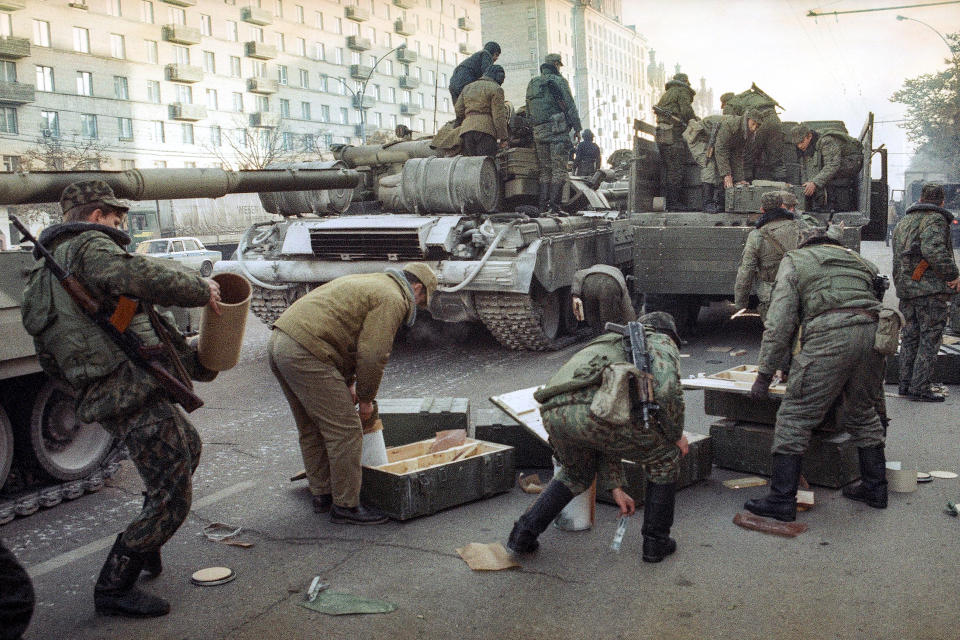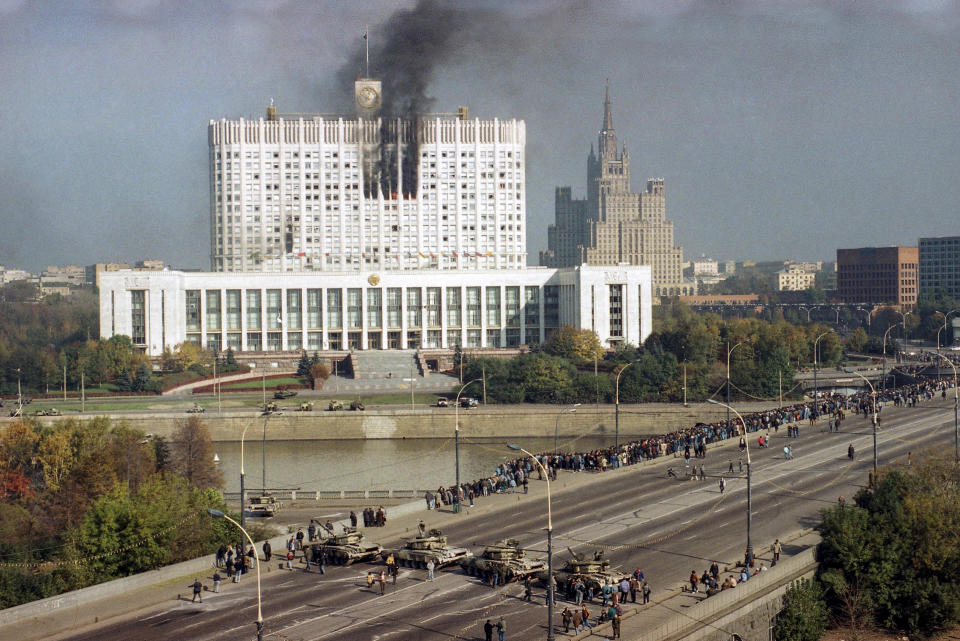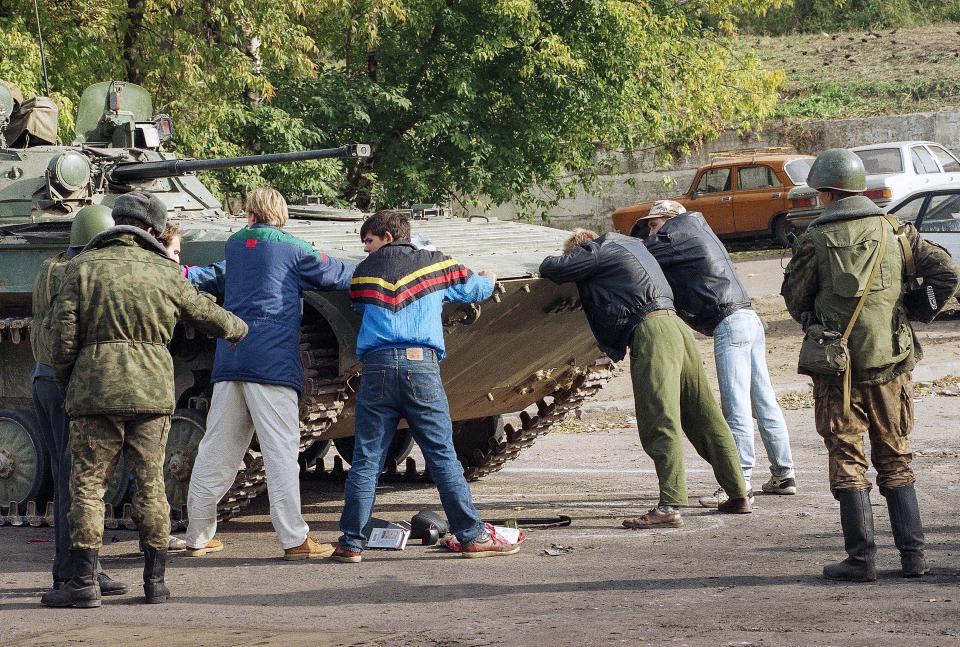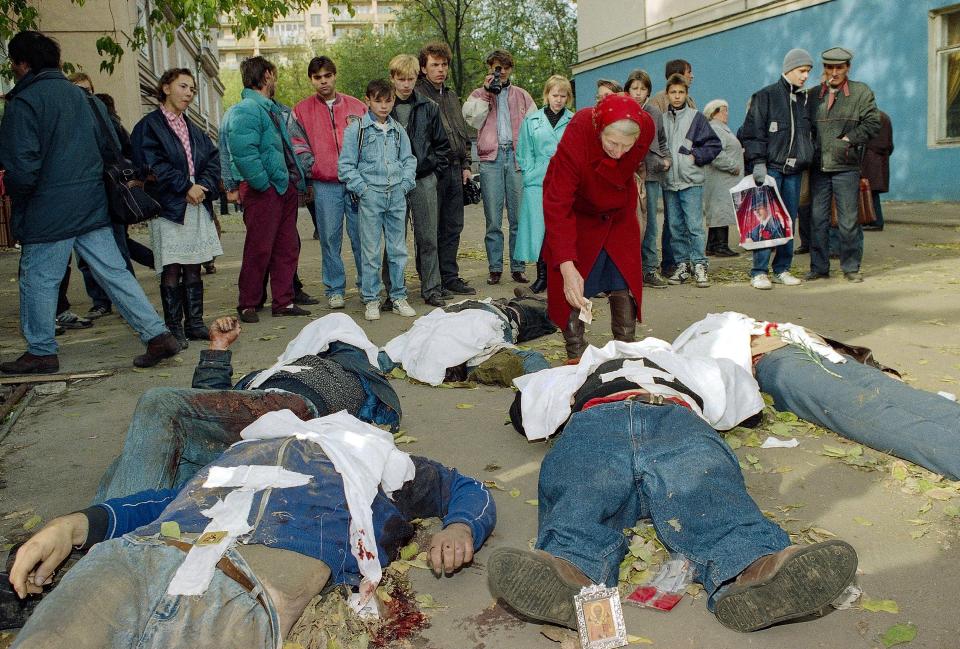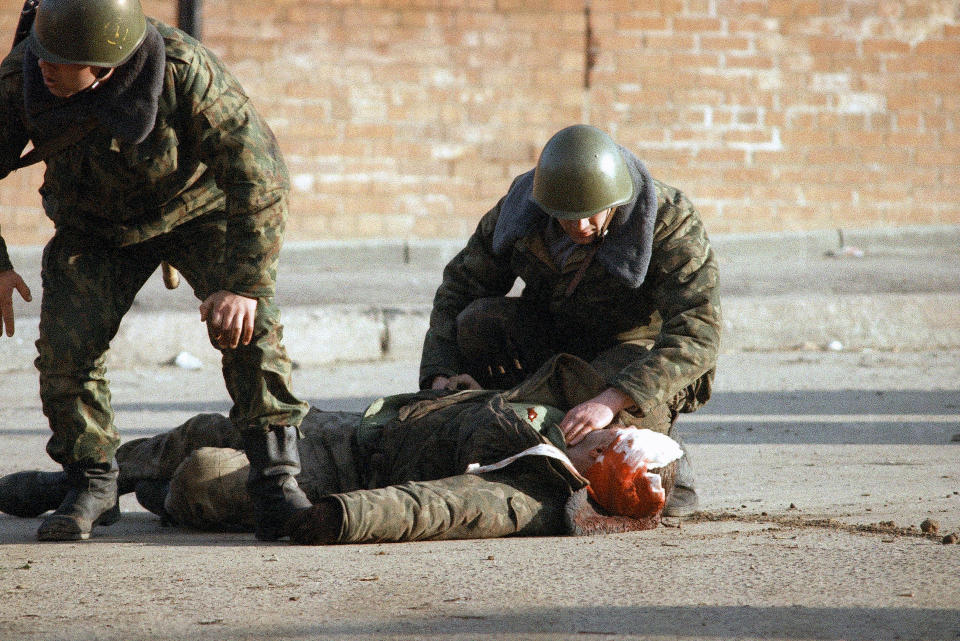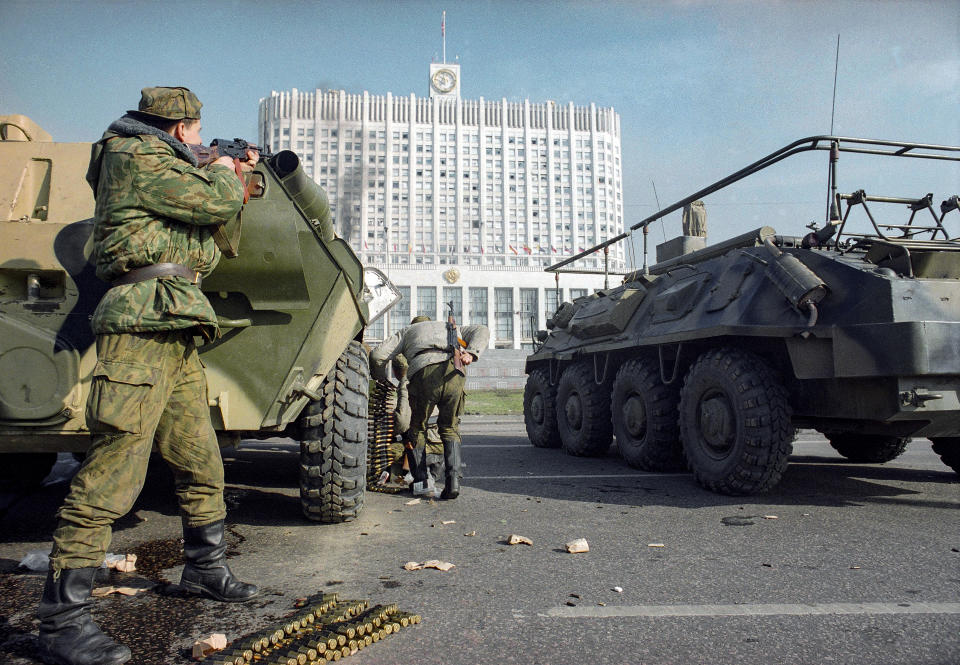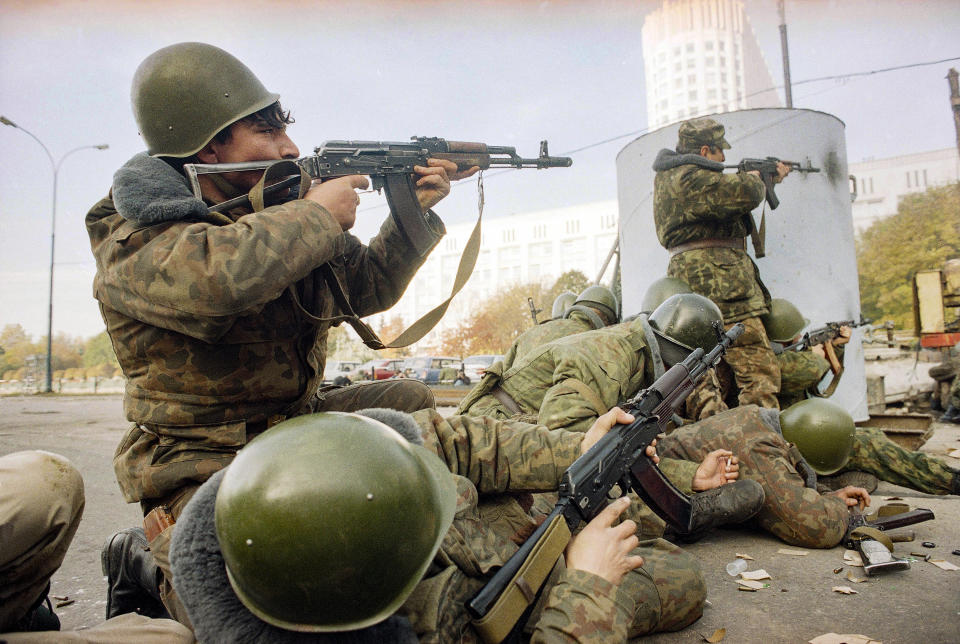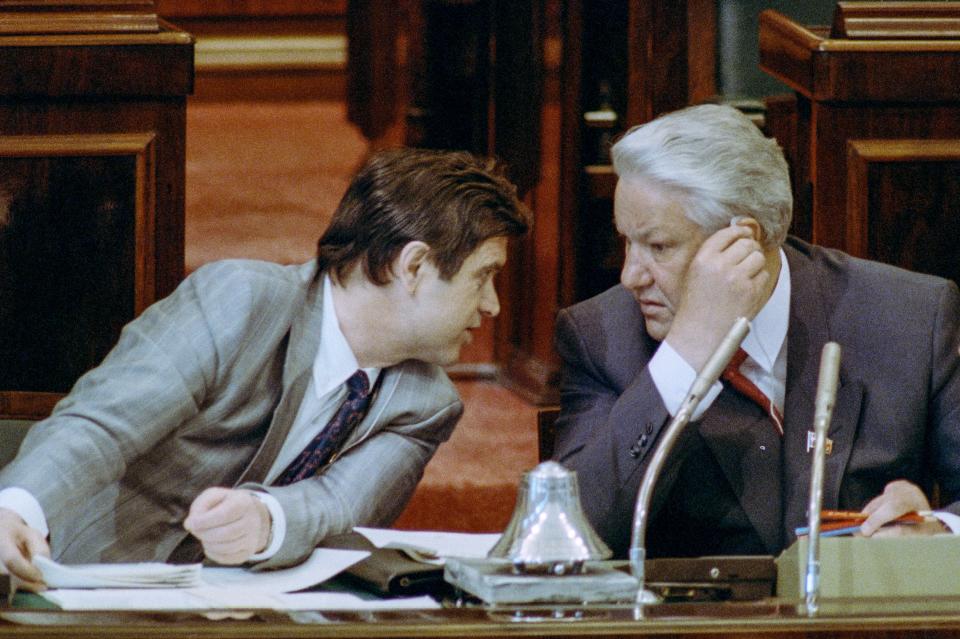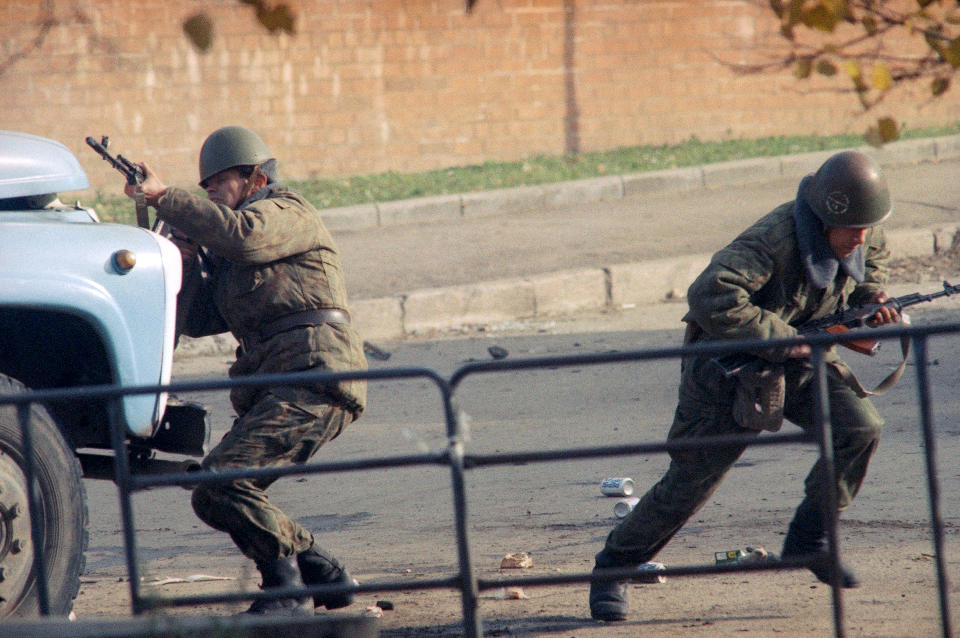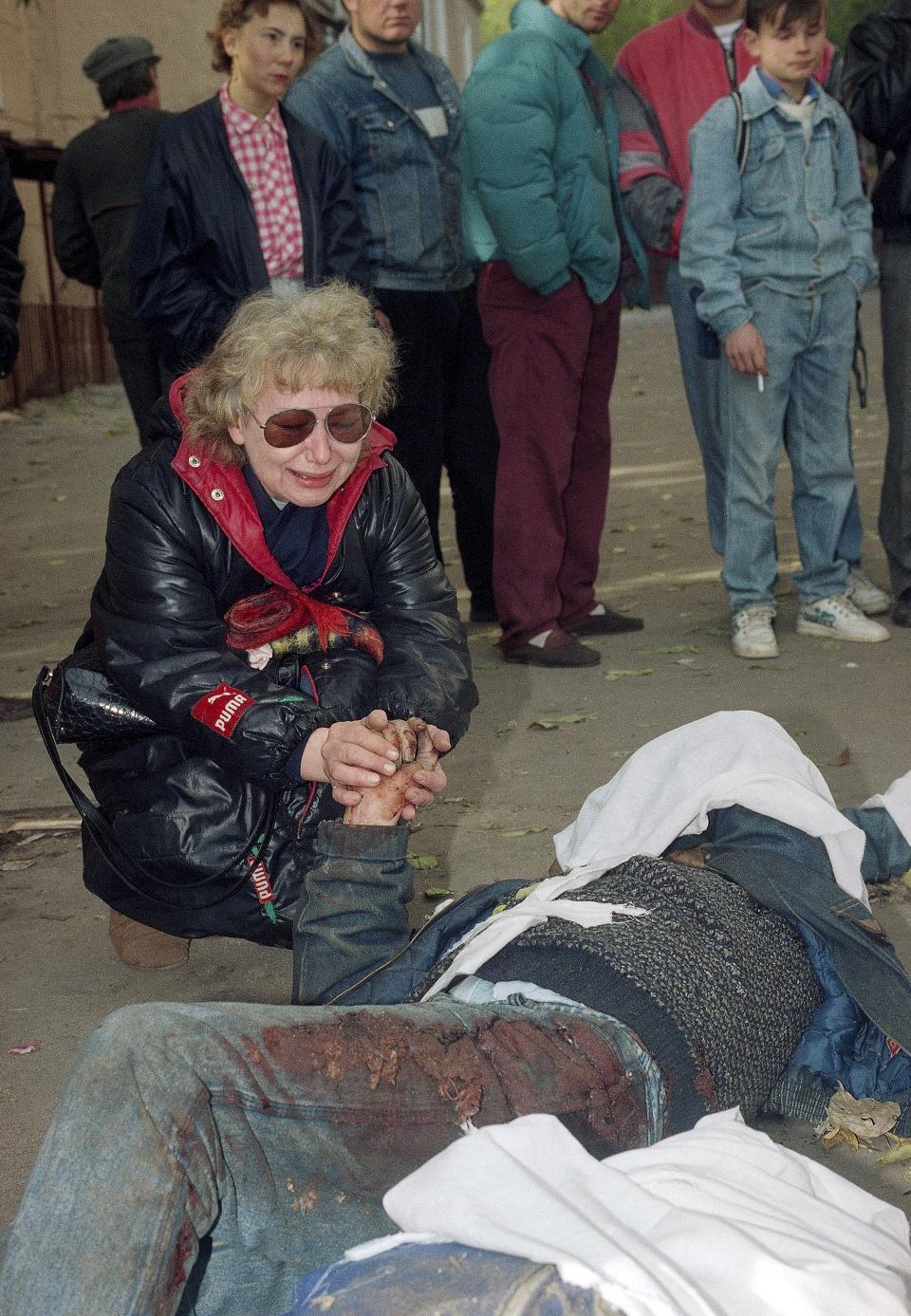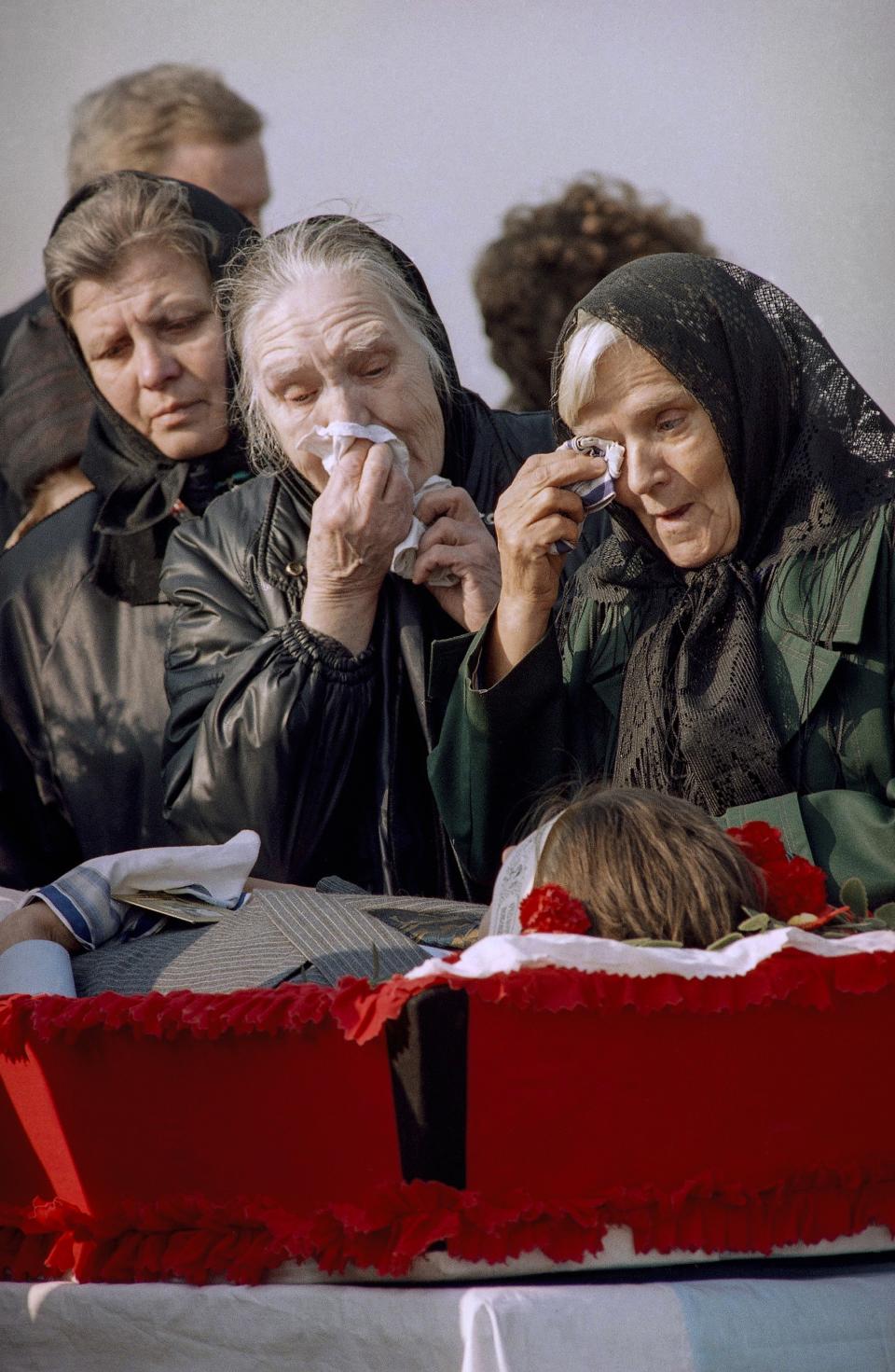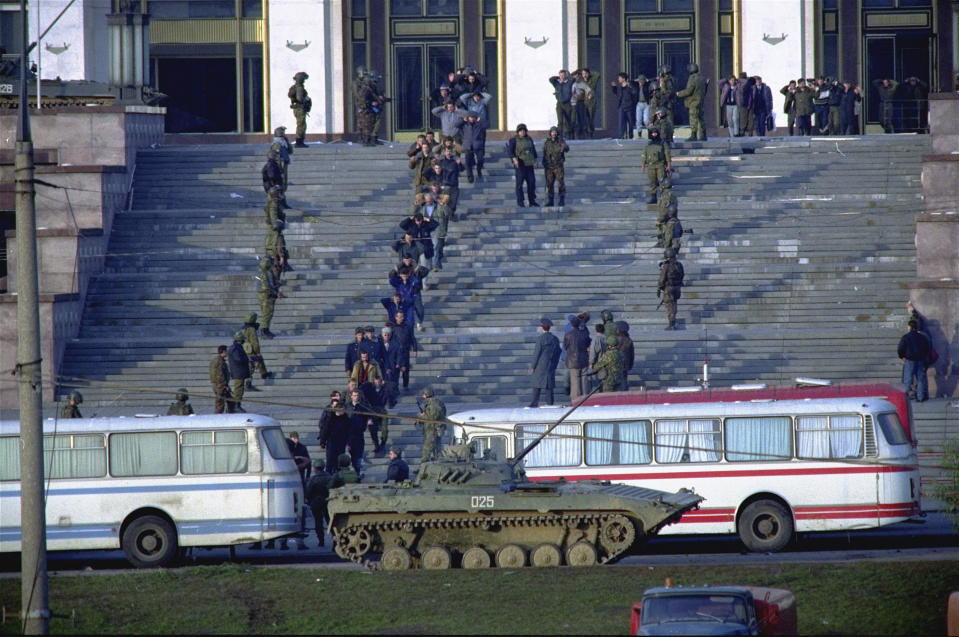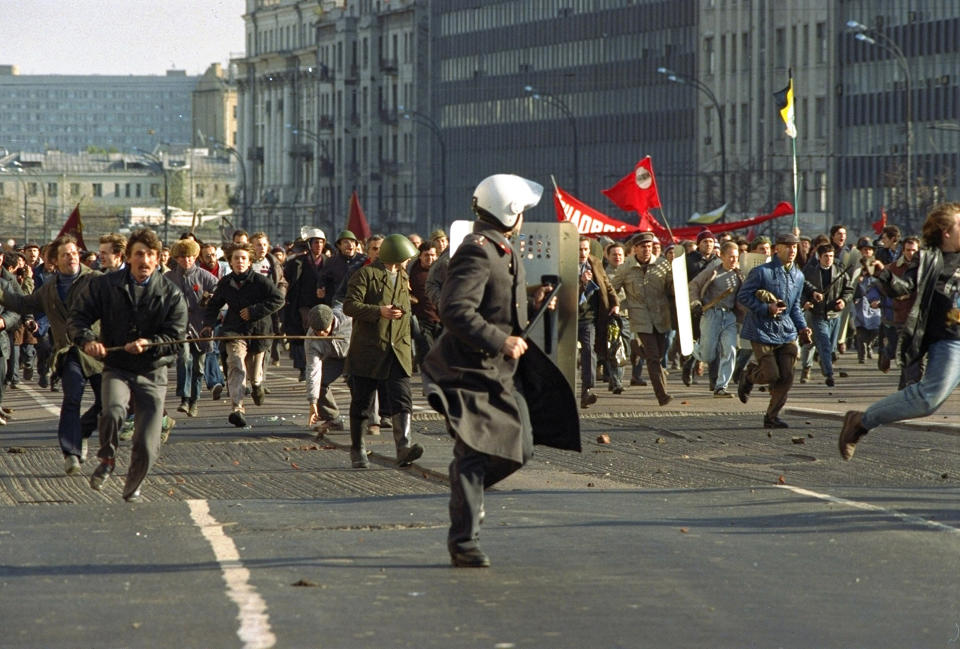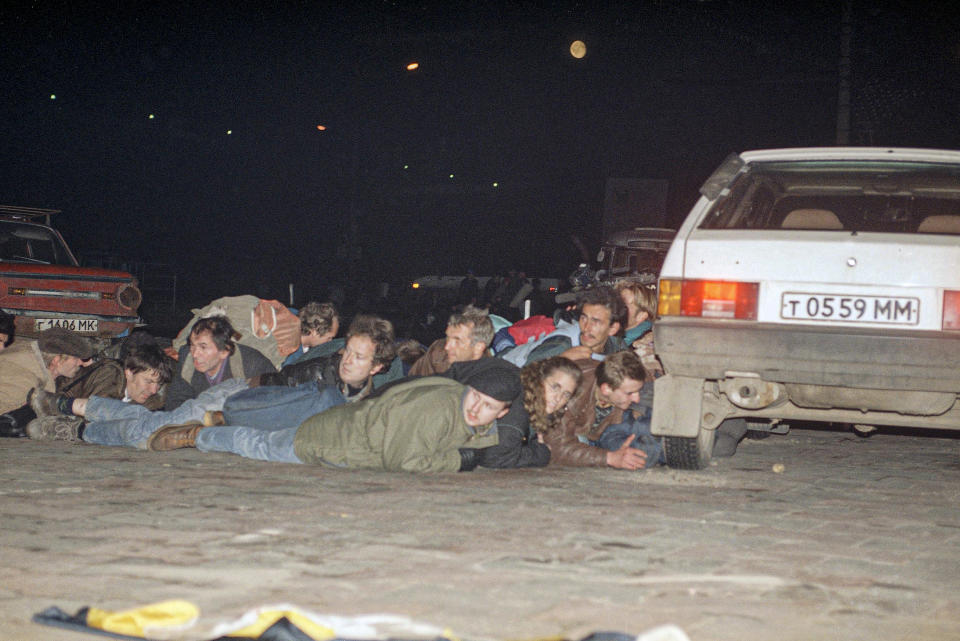30 years ago, the Kremlin crushed a parliamentary uprising, leading to strong presidential rule
- Oops!Something went wrong.Please try again later.
- Oops!Something went wrong.Please try again later.
Three decades ago, the world held its breath as tanks blasted the Russian parliament building in central Moscow while the Kremlin moved to flush out rebellious lawmakers in a crisis that shaped the country's post-Soviet history.
While Russia narrowly avoided what many feared could be a civil war, the violent clashes on Oct. 3-4, 1993, marked a watershed. It led to the creation of a top-down government system short of the checks and balances that later allowed Vladimir Putin to establish a tight grip on the country and become the longest-serving Kremlin leader since Soviet dictator Josef Stalin.
The crushing of the parliamentary rebellion against then-President Boris Yeltsin was widely seen as a lesser evil, compared with a possible victory of nationalist and Communist forces that supported it.
Many observers, however, said the use of military force to end the crisis dealt a heavy blow to the nascent Russian democracy and strengthened authoritarian trends in its politics, which resulted in Putin's unchecked powers that he used to send troops into Ukraine.
After putting out the mutiny, Yeltsin initiated the adoption of a new constitution that gave broad powers to the presidency, leaving parliament with little authority.
Russia's politics remained turbulent throughout the 1990s, with Yeltsin’s foes continually challenging his power, After Putin became president in 2000, he has used the legal framework created under his predecessor to methodically tighten control of the country and eventually unleash a relentless crackdown on dissent.
In 2020, Putin called a сonstitutional plebiscite that reset the clock on his tenure that could see him serving two more six-year terms and remaining in office until 2036.
After years of cracking down on the opposition, Putin faced little challenge to his authority until mercenary chief Yevgeny Prigozhin’s aborted rebellion in June. While that mutiny dented his grip on power and eroded his authority amid the fighting in Ukraine, an Aug. 23 plane crash that killed Prigozhin and his top lieutenants sent a chilling message to anyone daring to defy Putin.
“With suspicions running rife in the wake of the insurrection, the Russian elite was obliged to redouble their efforts to demonstrate loyalty to Putin,” said Andrei Kolesnikov, a senior fellow at the Carnegie Russia Eurasia Center.
The public feels scared and intimidated after years of sweeping Kremlin efforts to quash dissent, he said.
“Any major anti-Putin street protest would be quashed within seconds by today’s police state,” Kolesnikov said in a recent commentary.
Asked this week if a repeat of the events in 1993 is possible in today’s Russia, Kremlin spokesman Dmitry Peskov ruled it out, saying the country has “left the dark times behind and drawn its lessons.”
“The level of our country’s consolidation is a guarantee against the repeat of such situations,” Peskov said.
Yeltsin moved into the Kremlin after the USSR collapsed in 1991, following a failed attempt by hard-line members of the Soviet leadership to oust President Mikhail Gorbachev from power and reverse his reforms.
The violent clashes in October 1993 between government forces and supporters of the rebellious parliament followed a long showdown between Yeltsin and hard-line lawmakers who opposed his chaotic and painful free-market reforms. Yeltsin’s vice president, Alexander Rutskoi, sided with the rebel lawmakers.
As tensions soared, Yeltsin ordered the parliament disbanded, a move that Russia’s Constitutional Court declared illegal. Attempts to negotiate a settlement failed, and the crisis erupted into violence on Oct. 3, when demonstrators supporting the parliament clashed with police, stormed the mayor’s office and made an abortive attempt to seize the state TV broadcasting center.
Viktor Alksnis, a retired military officer who supported the rebellion, said in a recent podcast that “power was lying on the ground” on that day, and the parliament’s supporters could have won if their leaders showed a stronger will and determination.
The next day, Yeltsin ordered the military to intervene and it used tanks to pummel the parliament building, setting it ablaze in an attack that played out on live television worldwide. The authorities said 123 people were killed in the clashes, while unofficial estimates put the death toll in the hundreds.
Grigory Yavlinsky, a veteran politician who defied Yeltsin and later opposed Putin, described the 1993 events as a key moment that determined Russia’s post-Soviet history. He argued that while the parliament's defenders included hard-liners who unleashed the violence that made the use of force inevitable, the crisis and the subsequent passage of the new constitution put the country on the wrong track.
“The result is … the system that has led Russia where it now is,” he said in a recent commentary.
